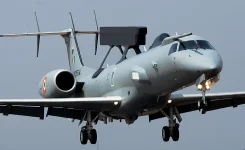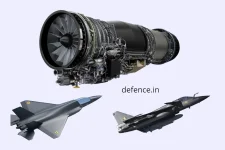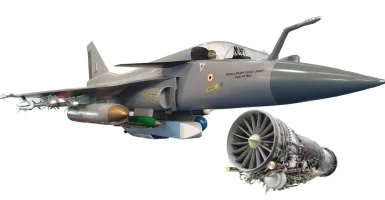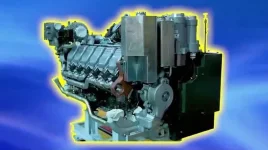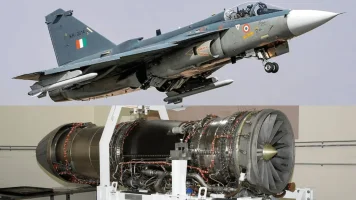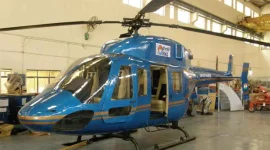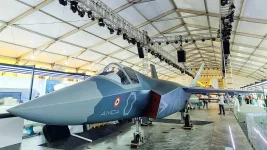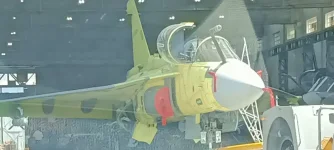- Views: 232
- Replies: 5
Hindustan Aeronautics Limited (HAL), India's state-owned aerospace and defence company, is developing a new supersonic trainer aircraft, the Hindustan Lead-in Fighter Trainer (HLFT-42). This initiative aims to provide the Indian Air Force (IAF) with an advanced platform for training pilots destined for sophisticated fighter jets.
Significantly, HAL is using modern 3D scanning technology to base the new trainer's design on the airframe of its vintage HF-24 Marut fighter, integrating elements from the contemporary Tejas Mk1 fighter.
This approach marks a strategic shift, blending legacy designs with modern technology, potentially speeding up development and avoiding issues encountered with previous 'clean-sheet' designs like the HJT-36 intermediate jet trainer.
First presented as a concept at the Aero India air show in 2023, the HLFT-42 is intended to serve as a Lead-in Fighter Trainer (LIFT). Aircraft in this category help pilots transition from basic training aircraft to high-performance combat jets such as the indigenous Tejas Mk2 and the upcoming Advanced Medium Combat Aircraft (AMCA).
HAL's design strategy involves digitally recreating the structure of the retired HF-24 Marut, specifically its mid-fuselage and wing layout, using precise 3D laser scanning. This digital blueprint is then merged with the front fuselage design of the existing Tejas Mk1 light combat aircraft.
The air intakes are also planned to be similar to the Tejas Mk1, moving away from the Marut's original configuration. By utilising proven aerodynamic shapes, HAL expects to reduce development risks, costs, and timelines.
The planned HLFT-42 differs from the twin-engine Marut as it is conceived with a single, powerful engine. This necessitates considerable modifications, especially to the aircraft's rear section.
HAL is considering high-thrust engine options, potentially the General Electric F414, which produces around 98kN of thrust and is already selected for the Tejas Mk2 programme. Another possibility is the more powerful 110kN thrust engine currently under development in India for the AMCA project.
A single-engine configuration generally offers benefits like lower fuel consumption and simpler maintenance compared to twin-engine designs, aligning the HLFT-42 with many modern fighter aircraft.
The HF-24 Marut, notable as India's first domestically developed jet fighter, was designed by the renowned German engineer Kurt Tank. It first flew in 1961 and remained in IAF service until the mid-1980s. Although designed for Mach 2 speeds, it never achieved its full supersonic potential due to the unavailability of sufficiently powerful engines at the time.
However, its aerodynamic stability was well-regarded. Decades after its retirement, HAL revisited this design. Using advanced laser scanning on a preserved Marut airframe, engineers created a detailed digital model, forming the structural basis for the new HLFT-42.
HAL's strategy for the HLFT-42 contrasts sharply with the development path of the HJT-36 Intermediate Jet Trainer (IJT), recently named 'Yashas'. The HJT-36 project, initiated in the late 1990s to replace the older HJT-16 Kiran trainers, was designed entirely from scratch.
While its first flight occurred in 2003, the programme faced significant delays and setbacks, primarily related to stall and spin recovery characteristics. These aerodynamic challenges, requiring extensive testing and redesigns (including modifications after a crash in 2011 and further changes in 2019), pushed back its operational clearance for over two decades. This experience highlighted the risks associated with completely new, unproven airframe designs.
The HJT-36 Yashas eventually received spin certification in 2022 and was displayed with modern avionics, including a glass cockpit, at Aero India 2025. However, the protracted development timeline served as a valuable lesson for HAL on balancing innovation with proven design principles.
For the HLFT-42, HAL is deliberately mitigating risks by using the digitally captured and well-understood aerodynamics of the HF-24 Marut as a foundation. This is expected to simplify the integration of modern flight control systems and avionics, leading to quicker validation.
Despite the promising approach, the HLFT-42 project still faces hurdles, chiefly the final selection and integration of a suitable engine. The choice between options like the GE F414 or potentially an indigenous engine like the Kaveri (if sufficiently developed and proven) could influence the project's timeline, echoing past engine-related delays in Indian aerospace projects.
However, the IAF has expressed a need for a supersonic LIFT capability. The HLFT-42, projected as a 16.5-tonne aircraft, is also envisioned to possess combat capability, potentially adding 70-80 versatile 4.5-generation aircraft to the IAF's inventory, capable of acting as frontline fighters if required.
HAL's reliance on a stable, proven airframe design suggests the HLFT-42 may have a smoother development path compared to the challenging journey of the HJT-36.

